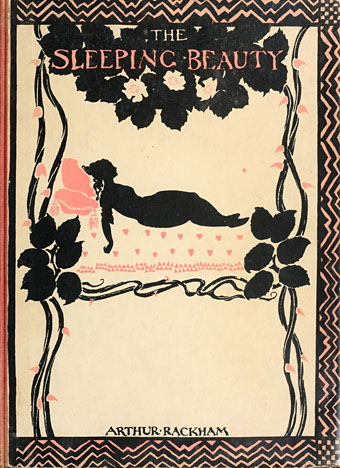
Another recent work-related discovery, this edition of the tale of Sleeping Beauty was published in 1920. The text is by CS Evans, and the book is illustrated throughout by Arthur Rackham who forgoes his usual ink-and-wash style in favour of silhouettes. Many of Rackham’s other books employ silhouettes, usually as vignettes at the ends of chapters, but this is the first book I’ve seen of his where the technique is applied to the book as a whole. The effect is stunning, with careful application of colour, and some very clever use of negative space. The combination of silhouettes with a fairy tale immediately brings to mind the animated films of Lotte Reiniger so it’s no surprise to find Rackham’s book being cited as an influence on both Reiniger and Fritz Lang. Browse the rest of the pages here or download the book here.
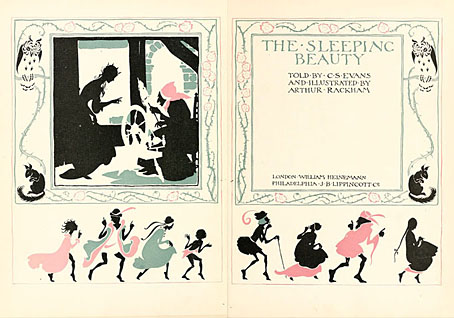
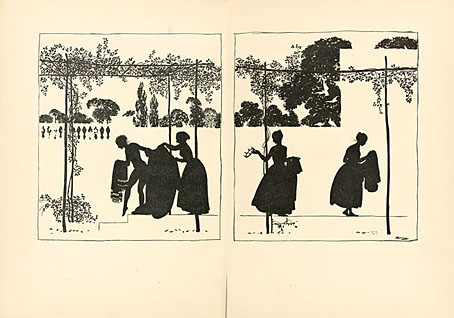
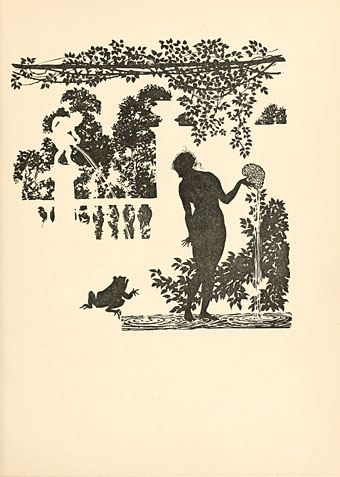
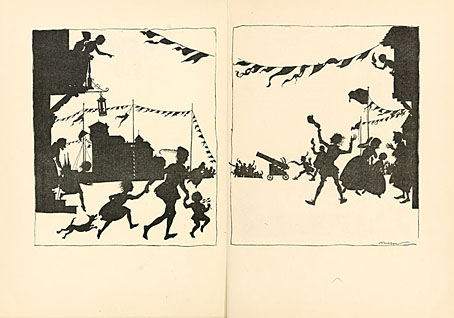
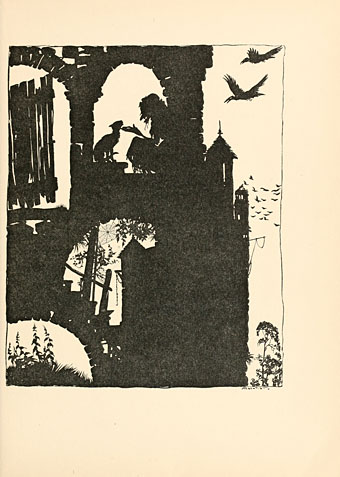
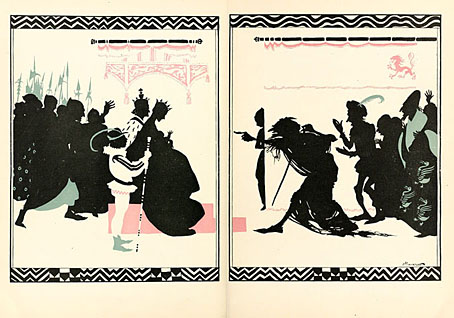
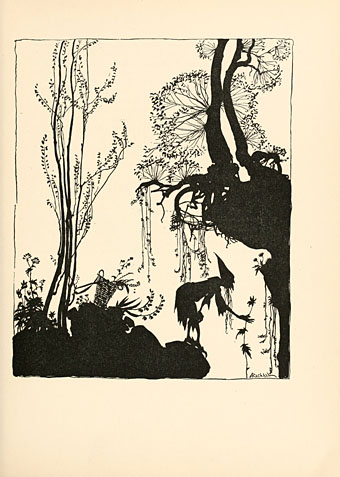
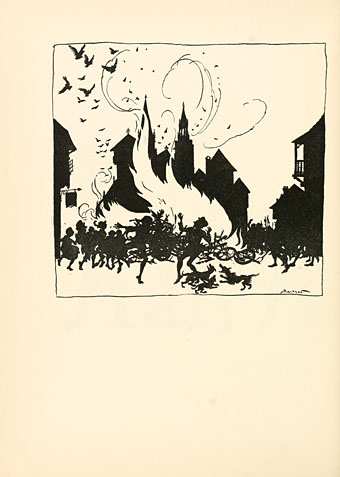
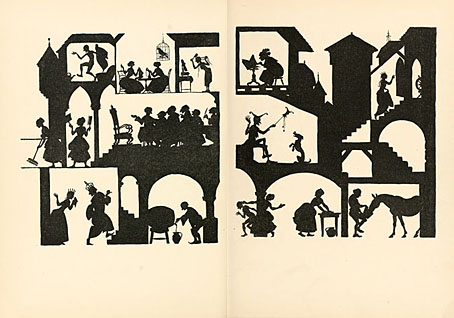
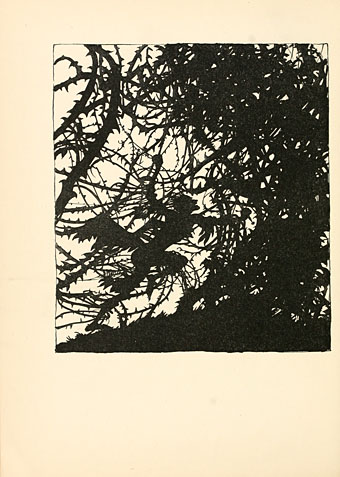
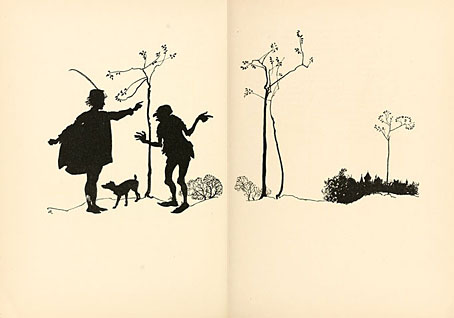
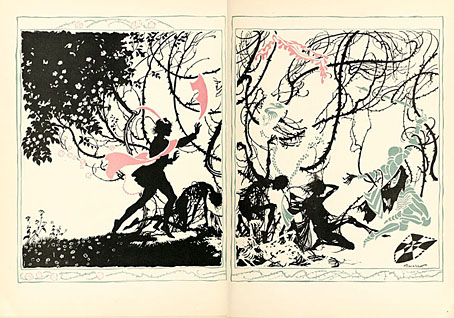
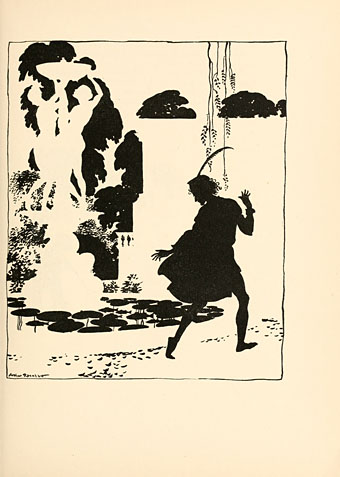
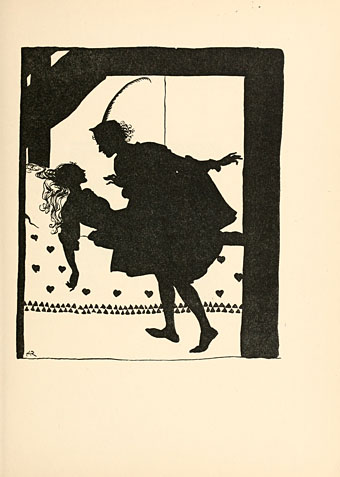
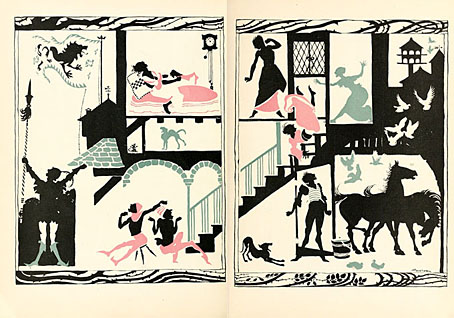
Elsewhere on { feuilleton }
• The illustrators archive

A couple years ago Dover Books brought out a new series- the “Calla Editions.” They’re mostly nicely bound, illustrated fairy tales. One of the more recent ones in “Cinderella” illustrated by Rackham.
Although it has a few drawings/paintings(?) more typical of his style, it’s mostly silhouettes.
Actually a Calla Edition of Rackham’s “Sleeping Beauty” was just published.
http://www.amazon.co.uk/The-Sleeping-Beauty-Calla-Editions/dp/1606600419/ref=sr_1_2?ie=UTF8&qid=1364313503&sr=8-2
Puts the recent silhouette-based illustration fad to shame.
G.: Thanks. Here’s Dover’s own page for the book:
http://store.doverpublications.com/1606600419.html
Thanks John for bringing this up from the wreck and sea of information out there! Not only is it a marvelous book – I fell in love with the Disney film when I was a kid and have sought out the various versions of the story ever since (it’s a shame this edition didn’t include a dragon, Rackham did such great dragons) – but what about the Internet Archive’s book reader – has anyone succeeded in using that for their own devices – I know I would love to be able to scan some of my own stuff into that format…?
I liked the Disney dragon too when it used to appear on TV. The film is rather bland compared to their other fare so they evidently thought it required more conflict at the end.